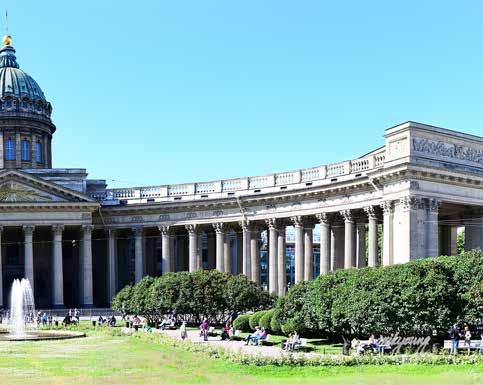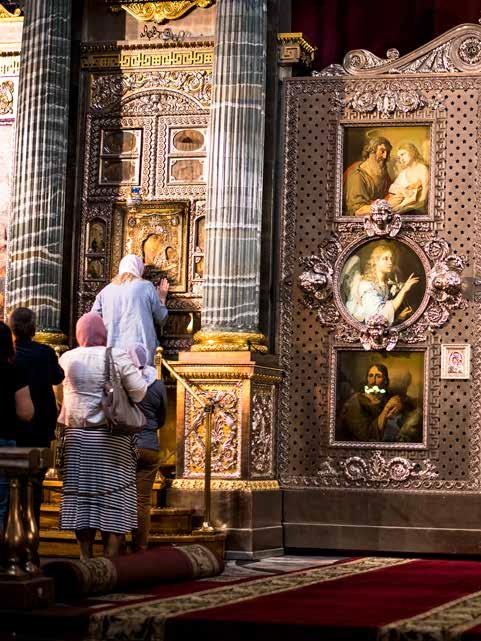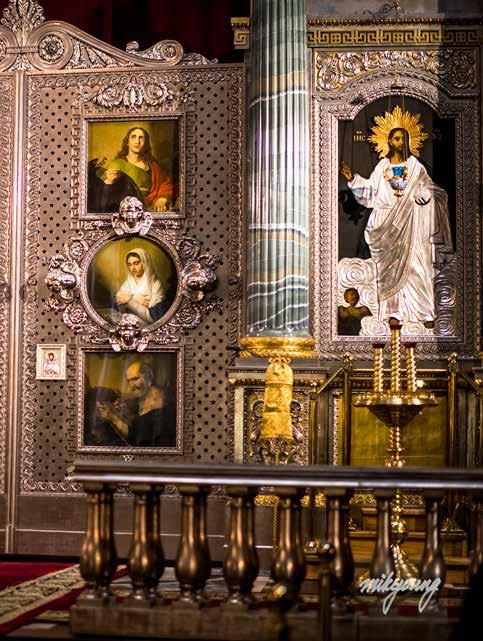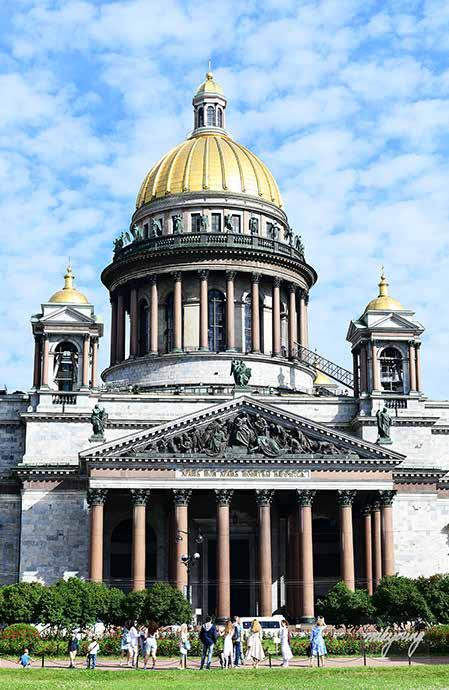
2 minute read
Mikyoung Cha The Church of the Savior on Spilled Blood Photo feature of the Cathedrals of St. Petersburg
On 1 May 1703, Peter the Great took both the Swedish fortress of Nyenschantz and the city of Nyen, on the Neva river. Tsar Peter the Great founded the city on 27 May 1703 (in the Gregorian calendar, 16 May in the Julian calendar) after he reconquered the Ingrian land from Sweden, in the Great Northern War. He named the city after his patron saint, the apostle Saint Peter.
The following pages feature images of the majestic cathedrals of this magnificent city.
Advertisement
*References in this feature are taken from wikipedia and information available on google.
Saint Isaac’s Cathedral or Isaakievskiy Sobor, is a cathedral that currently functions as a museum in Saint Petersburg, Russia. It is dedicated to Saint Isaac of Dalmatia, a patron saint of Peter the Great, who had been born on the feast day of that saint. The cathedral took 40 years to construct, from 1818 to 1858. It was originally built as a cathedral but was turned into a museum by the Soviet government in 1931 and has remained a museum ever since.
More than 400 kg of gold, 1000 tons of bronze and 16 tons of malachite feature in the interior of St. Isaac’s Cathedral.
Auguste de Montferrand, was the main architect of St. Isaac’s Cathedral.*
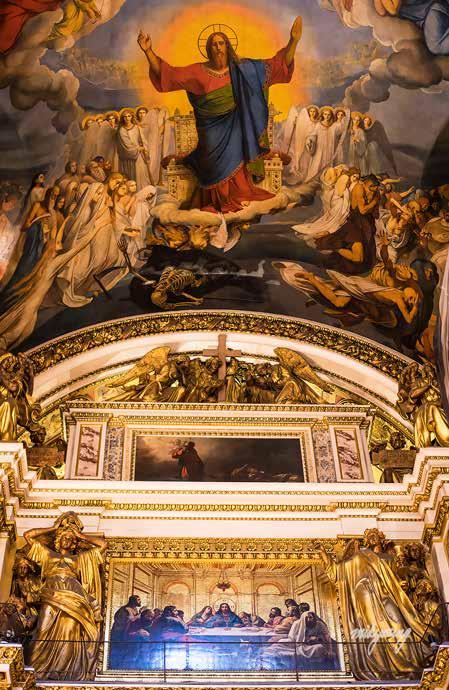
The sanctuary, seen through the Holy Doors during Bright Week, St. Isaac’s Cathedral.

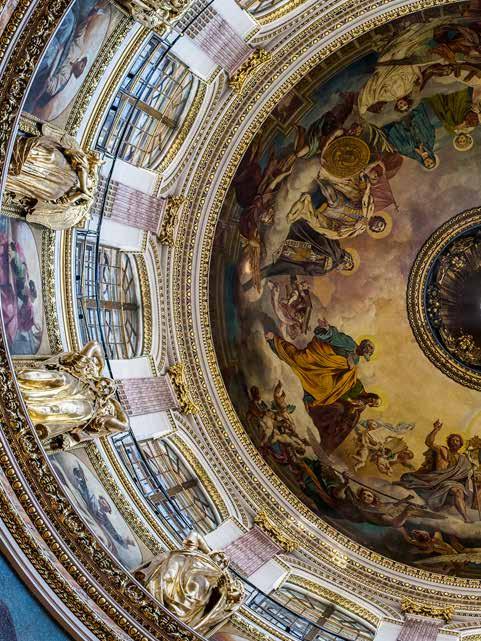
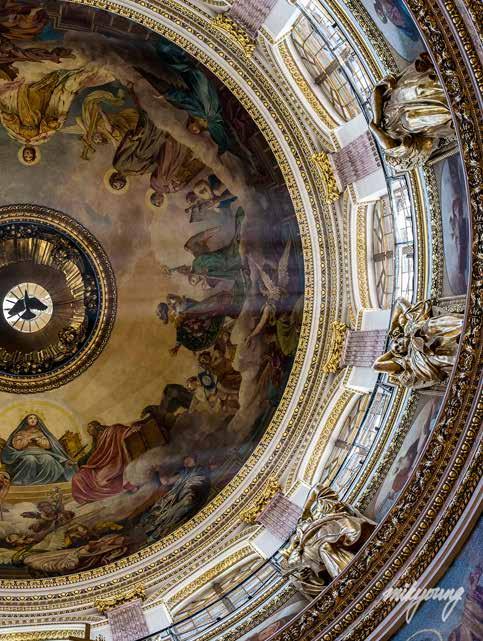
‘Great is the mystery of godliness: He was revealed in the flesh’ is the inscription above the massive bronze Southern doors of St. Isaac’s Cathedral.

Over 600 sq. m of wall space is decorated by mosaics and paintings by more than 200 artists, St. Isaac’s Cathedral.

The Church of the Savior on Spilled Blood in St. Petersburg is an Orthodox Memorial Church of the Resurrection of Christ, constructed in memory of Emperor Alexander II who was mortally wounded in an attack at this place on March 1, 1881. The church was constructed between 1883 and 1907. The cathedral was built as a monument to Tsar-Martyr and is located in the historic center of St. Petersburg, on the banks of the Griboyedov Canal near Mikhailovsky Garden and the Konyushennaya Square, not far from the Fields of Mars.
It is also known as the Temple of the Savior on Spilled Blood, and the Cathedral of the Resurrection of Christ.
The interior is a natural mosaic museum. The total area of all mosaics is 7065 sqm. The mosaic exposition of the cathedral is considered to be one of the largest collections in Europe. Icons for the iconostasis, made in the technique of mosaic, sketches Vasnetsov and Nesterov.“Savior” and “The Virgin and Child”.
It was designed by Alfred Parland in the style of 16th and 17th century Russian churches.*


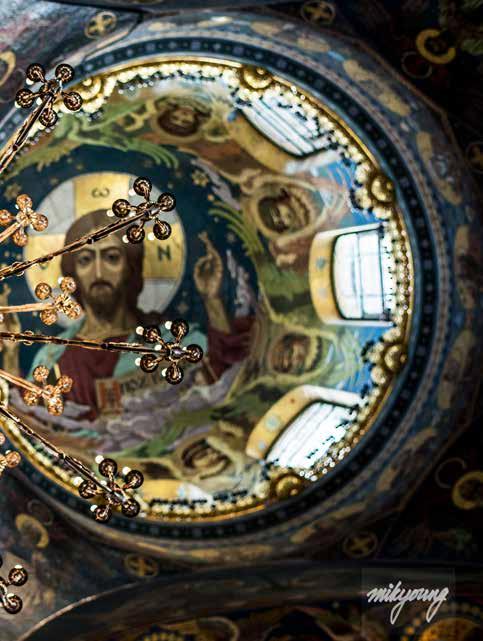

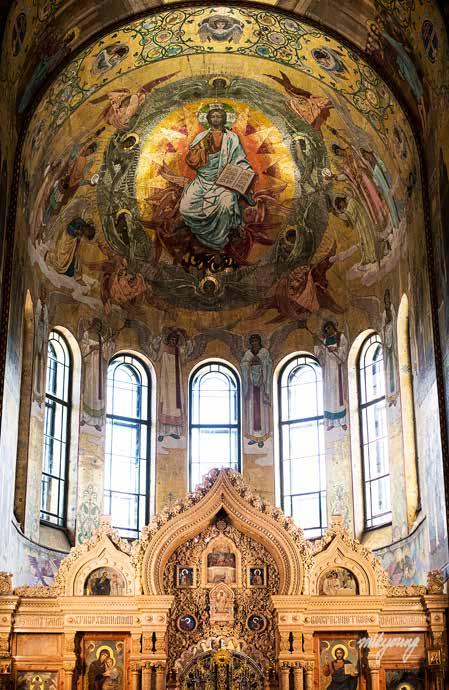
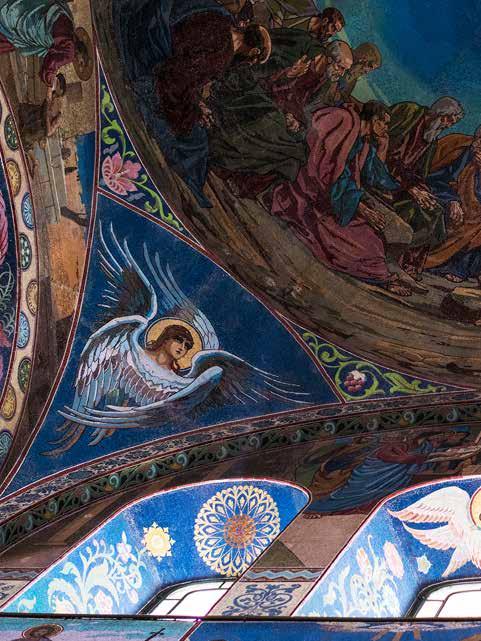

Kazan Cathedral or Kazanskiy Kafedralniy Sobor, which is also known as the Cathedral dedicated to Our Lady of Kazan (Holy Protectress of Russia), one of the most venerated ten years. It was completed in 1811.The architect, Andrey Voronikhin, modelled the the commander-in-chief General Mikhail Kutuzov asked Our Lady of Kazan for help. their victory over Napoleon. Kutuzov himself was interred in the cathedral in 1813; In 1815 keys to seventeen cities and eight fortresses were brought by the victorious

Cathedral of Our Lady of Kazan, is a cathedral of the Russian Orthodox Church. It is venerated icons in Russia. Construction of the cathedral started in 1801 and continued for the building on St. Peter’s Basilica in Rome.After Napoleon invaded Russia (1812), help. The Patriotic War over, Russians saw the cathedral primarily as a memorial to 1813; and Alexander Pushkin wrote celebrated lines meditating over his Sepulchre. victorious Russian army from Europe and placed in the cathedral’s sacristy.*
